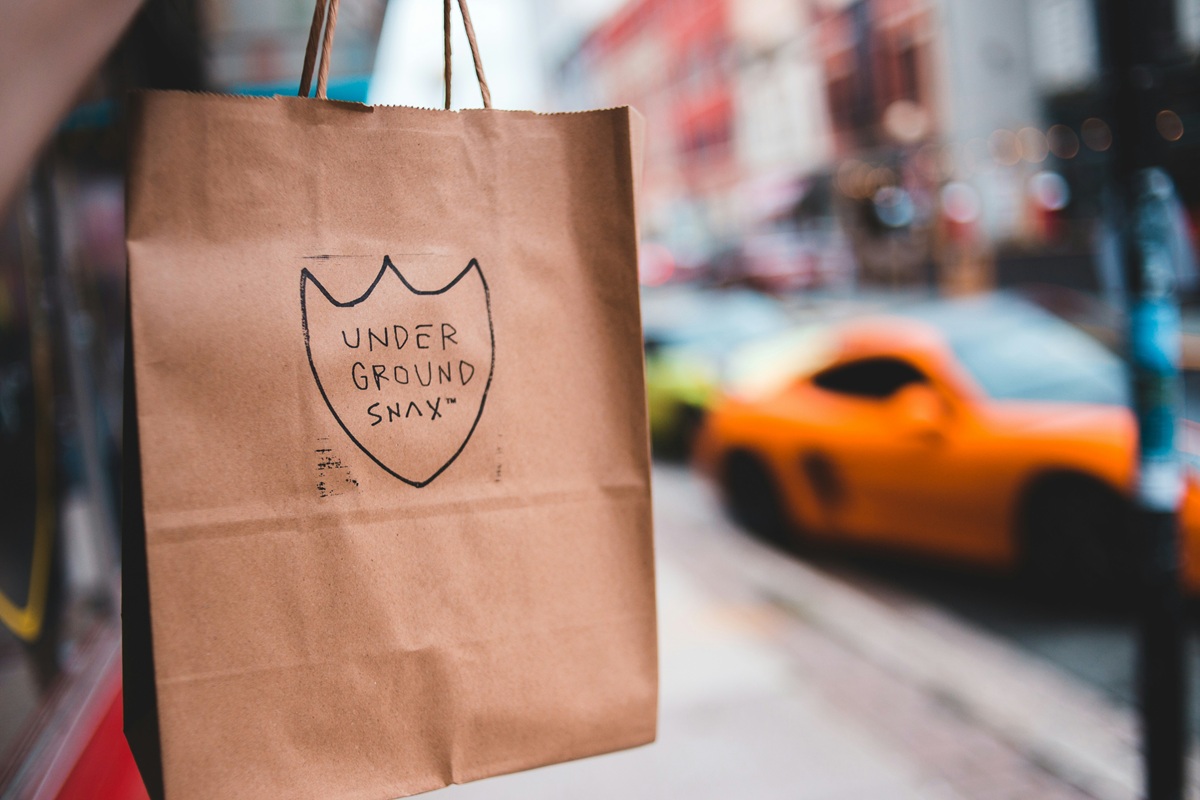In 2025, the American marketplace is currently becoming more competitive and growing faster than before. US consumers are constantly filled up with di
In 2025, the American marketplace is currently becoming more competitive and growing faster than before. US consumers are constantly filled up with digital ads, promotions from influencer, and campaigns marketing across TikTok, Instagram, YouTube, and even in grocery aisles. According to the current data, the average American gets between 6,000–10,000 marketing messages per day.How US Brands Are Winning Hearts, Not Just Sales
The marketing done noisly or with alot of shouts is no longer working as it was earlier.The booming brands that stands out in the united states are the ones that connect people emotionally. The ones that changes people moods,vibe and personality.This approach is described as vibe marketing, and it’s reshaping how American companies win customer loyalty.

Unlike traditional ways of doing advertisements that focuses on pushing products and prices, vibe marketing creates resonance emotional . It’s not just about what a brand sells but focus on how it changes people feelings. Currently, that emotional connection is proving to be more powerful than discounts or flashy features.
What Exactly Is Vibe Marketing?
Vibe marketing is described as the art of creating a feeling towards certain brand thats a cultural energy that people want to be part of. Instead of asking, “How do we sell more?”, vibe marketing asks, “How do we make people feeling seen, inspired, or to be connected?”
The key ingredients include:
-
Authentic storytelling: This involves sharing real stories from customers, employees, or communities.
-
Cultural alignment: It Reflects American values, humor, and lifestyle cues.
-
Aesthetic consistency: These Creates the visuals, sounds, and moods that can be easily recognizable.
-
Community-driven engagement: Inviting the customers to participate, co-create, and share.
-
Shared values: Demonstrating commitment to causes that matter to US audiences, such as sustainability, inclusivity, or mental health.
Generally, vibe marketing is emotional branding with cultural intelligence.
Why Vibe Marketing Matters in the US in 2025
1. Oversaturated Digital Space
With so many ads fighting for daily attention, Americans have become skilled at tuning out the hard sell. A relatable vibe cuts through the clutter because it feels less like an ad and more like a shared experience.
2. Emotions Drive American Purchasing Decisions
Research shows that all brands with the strong emotional connections outperform competitors by about 26% in gross margin and 85% in sales growth. Emotional ads in the US consistently outperform the ones which are rational ones, and the consumers are far more likely to remember brands that brought the feelings as compared to those who do not show any feelings.
3. Gen Z and Millennials Demand Authenticity
In the US, Gen Z and Millennial consumers now make up more than half of the buying population. These groups valuethe expressions such as authenticity, diversity, and identity alignment over traditional advertising. They expect brands to reflect their values, whether it’s sustainability, inclusivity, or humor.
4. Belonging Matters More Than Price
Owning a product is more important than its price. Consumers in America are increasingly joining “brand tribes.” Whether it’s sneakerheads loyal to Nike, iced coffee fans riding the Dunkin’ wave, or gamers immersed in Twitch culture, vibe marketing fosters a sense of belonging. That’s something which discounts alone can’t buy.
5. Trust Is the New Currency
In a marketplace filled with a lot of doubt, vibe marketing builds trust in the products. According to Edelman’s 2024 Trust Barometer, 62% of the US consumers states that they will stay loyal to brands that share their values, even if the cheaper alternatives available.
US Brands That Are Winning With Vibe Marketing
Understanding vibe marketing operations, we can look on how some US-based brands are changing it in 2025.
1. Liquid Death (California)
-
The Vibe: Rebellious, showing a lack of respect for people, challenging societal norms, distrusting authority and embracing personal honesty, .
-
How They Do It: By branding water like beer or an energy drink branded with skull logos, wild marketing stunts, and dark humor. Their displayed tagline is “Murder Your Thirst” isn’t just about hydration but it’s about product identity. Liquid Death doesn’t sell water but selling rebellion.
2. Nike (Oregon)
-
The Vibe: Empowerment, inclusivity, resilience.
-
How They Do It: Nike’s campaigns are less about shoes and more about stories where athletes overcoming adversity, communities embracing the diversity, and individuals pushing their limits. They’re not just marketing products but also fueling the American dream.
3. Ben & Jerry’s (Vermont)
-
The Vibe: That is Socially conscious fun.
-
How They Do It: Beyond their quirky ice cream flavors, Ben & Jerry’s boldly takes stances on the social justice, climating changes, and displaying equality. By combining activism with the playfulness, they’ve built deep loyalty among socially conscious US consumers.
4. Spotify (New York HQ)
-
The Vibe: The Personalized, friendly and the tune that displays culture.
-
How They Do It: Their 2025 AI DJ isn’t robotic as it feels American, witty, and conversational. It references cultural trends, making jokes, and even adds a sense of companionship. Spotify turns music streaming into a real personal vibe.
5. Dunkin’ (Massachusetts)
-
The Vibe: The daily Americans hustle, with lots of humor.
-
How They Do It: Dunkin’ positions itself as the coffee brand for the real people, not high-end coffee snobs. With influencer collaborations, fun TikTok content, and regionally loyal marketing (especially in the Northeast), Dunkin’ sells more than coffee but also selling their sell belonging.
Emotional Triggers That Work Best With US Consumers
For vibe marketing to succeed in America, it must tap into emotional drivers rooted in their cultures. The strongest ones include:
-
Nostalgia: Americans love throwbacks to the 90s and 2000s. From fashion to music, nostalgia marketing creates instant emotional resonance.
-
Humor: US consumers value brands that don’t take themselves too seriously. Wendy’s Twitter “roasts” are a prime example of humor-based vibe marketing. The ones which makes people laugh.
-
Belonging: Community-focused vibes on sports fandoms, fitness tribes, gamer squads which drives powerful loyalty.
-
Empowerment: Americans resonate deeply with stories of self-improvement, hustle, and resilience. The like how a story empower them to grow more and more every day.
-
Freedom & Individualism: Self-expression is central to American identity. Brands that allow personalization or showcase individuality usually win big.
Metrics That Prove Vibe Marketing Works in the US
-
Emotional ads outperform rational ones: Emotional campaigns generate 2x more profit growth in the US market.
-
Customer loyalty spikes: 80% of Americans say they’re more likely to stick with brands that make them feel emotionally connected. As soon as they try a product they stick to it.
-
Price resilience: US consumers will pay more for a brand that aligns with their values and lifestyle for instance the think Apple or Tesla.
-
Social virality: Emotionally engaging US campaigns are 3x more likely to be shared on platforms like TikTok and Instagram. They like what can be seen by many or the ones that trends much.
Common Pitfalls for American Brands
While vibe marketing is powerful, US audiences can be tough to impress. Mistakes include:
-
Inauthentic activism: Americans are quick to call out brands that “perform” social responsibility without real action.
-
Cultural missteps: Misusing slang, memes, or trends comes across as tone-deaf.
-
Trying to please everyone: In the US, niche audiences matter. Being “too general” can dilute the brand vibe.
How US Brands Can Craft a Winning Vibe in 2025
-
Define your emotional core – Decide what you want Americans to feel: nostalgic, empowered, rebellious and getting comforted.
-
Audit all touchpoints – From ads to packaging, ensure your vibe is consistent across every channel. Maintaining a product in every market places.
-
Leverage storytelling – Sharing stories from US customers, communities, and employees to humanize your brand.
-
Tap into cultural cues – Keep Referencing American humor, sports, pop culture, and the holidays.
-
Build community, not just campaigns – Encouraging user-generated content, co-creation, and brand “tribes.”
-
Track the right KPIs – This involves Measuring engagement, sentiment, shareability, and brand recall just a matter of selling.
The Future of Vibe Marketing in America
Looking ahead, vibe marketing in the US will continue to evolve in several exciting ways:
-
AI-Powered Personalization: Americans will expect hyper-personalized experiences that feel human, not robotic.
-
Immersive Branding: AR/VR campaigns tied to sports, entertainment, and American culture will become the mainstream.
-
Ethical Baselines: Sustainability and inclusivity won’t be optional but they will be expected.
-
“Slow Vibes”: Americans tired of constant noise will reward brands that promote mindfulness, calm, and intentionality.
Conclusion on How US Brands Are Winning Hearts, Not Just Sales
In 2025, vibe marketing has become the backbone of successful US branding culture. The companies that thrive are those that win hearts before wallets, creating emotional connections that translate into loyalty, advocacy, and long-term growth.
For US businesses, the marketing strategy is clear that one should not only market the products but market the vibe too.When Americans say, “This brand just gets me,” that’s when you know vibe marketing is working.



COMMENTS